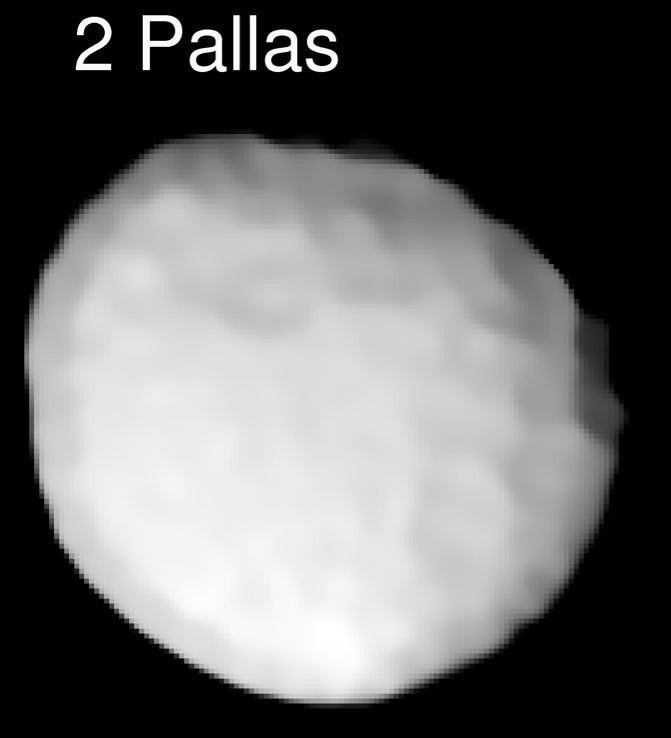Romanian astronomer helps unlock the mystery of "the golf ball asteroid" Pallas
Dr. Mirel Birlan, researcher at Paris Observatory and the Astronomical Institute of the Romanian Academy is part of a team of researchers that has looked up-close at the Pallas asteroid, the third largest object in the asteroid belt, to better understand its unusual tilted orbit. The team discovered that the surface of the asteroid is so cratered, that researchers dubbed it “the golf ball asteroid”. The research team believes that the craters are a consequence of a violent period of collision during its history and that this could also explain the unusual inclination of its orbit that has puzzled scientists for centuries.
The Pallas asteroid is almost one-seventh the size of the Moon. For centuries, astronomers have noticed that the asteroid orbits along a significantly tilted track compared with the majority of objects in the asteroid belt. This inclination remained a mystery for a long time. Now a European team, led by principal investigator Pierre Vernazza from the Laboratoire d'Astrophyisque de Marseille in France, and including Dr. Mirel Birlan, obtained images of Pallas using ESO’s Very Large Telescope (VLT), an array of four telescopes, each with an 8-meter-wide mirror, situated in the mountains of Chile.
The high resolution images show a very cratered surface of the asteroid. In addition, the researchers created a reconstructed 3D model of the shape of the asteroid, revealing a heavily cratered object on the poles, but also at the equatorial regions. The researchers identified 36 craters larger than 30 kilometres in diameter, covering more than 10% of its surface — proof that Pallas experienced a violent period of collision during its history, two to three times more intense than the one of other large asteroids like Ceres or Vesta. The heavily cratered surface explains also the preservation of its initial shape after the formation. This collisional period could also explain Pallas’ tilted orbit.
The images of the asteroid have also revealed a bright spot on the surface of Pallas. The most probable explanation of this finding and its origin is that Pallas has large deposits of salts at its surface, most probably formed by a mixture of water and silicates. The investigations carried out by the European team have also led to the discovery of the Pallas family of asteroids, a cluster of small asteroids. Simulations of impacts with Pallas suggest that this family could be the result of a violent collision about 1.7 billion years ago by an object having a diameter between 20 km and 40 km. Asteroid 3200 Phaeton, identified as the source of the Geminids meteor shower, which is observed on Earth in December, is part of the Pallas family, and could provide clues to understanding the origin of the parent body, Pallas. Thus, observing meteors and collecting meteorites coming from Phaeton could partly solve the history of Pallas.
The findings were published in Nature Astronomy https://www.nature.com/articles/s41550-019-1007-5.
Published on: Feb 20, 2020
